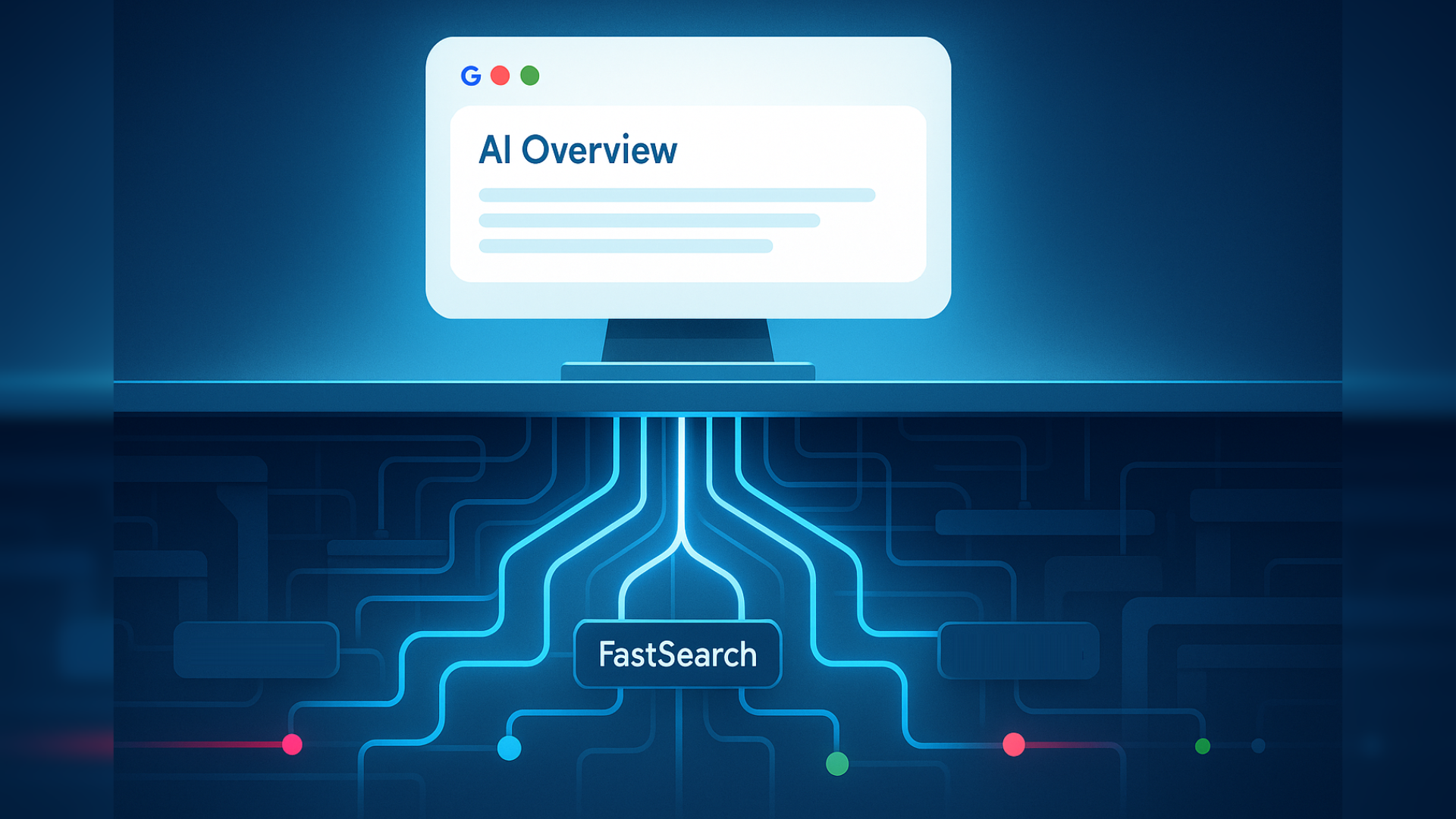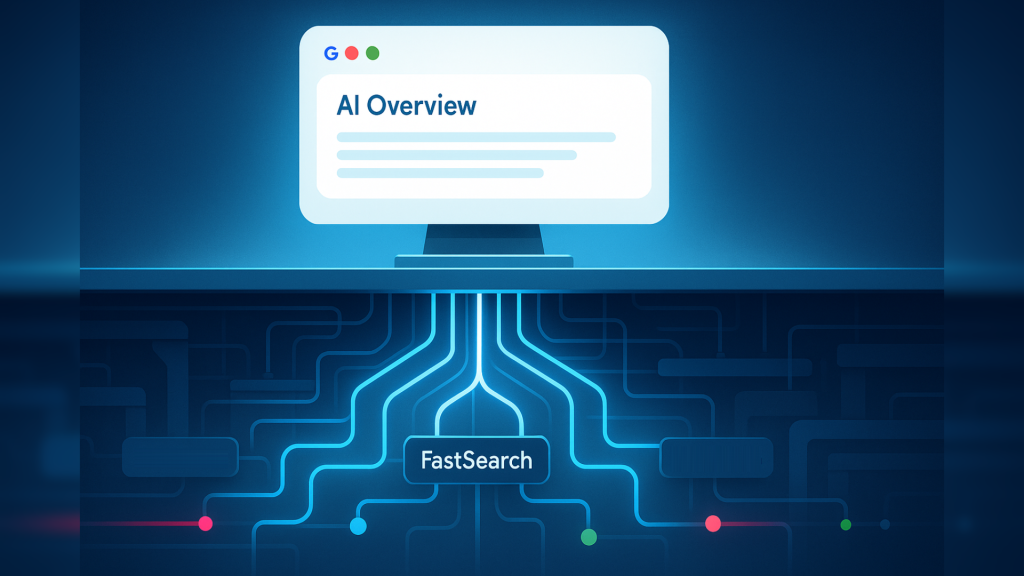Google FastSearch: Everything you need to know

Court filings in Google’s antitrust case revealed FastSearch, a proprietary system few search marketers have heard of.
It sits at the core of how Google grounds its AI Overviews, prioritizing speed over the deeper analysis behind traditional search results.
That distinction raises an important question: what exactly does FastSearch prioritize?
What is Google FastSearch?
FastSearch is Google’s internal technology for grounding Gemini models and generating AI Overviews.
While traditional Google Search analyzes massive amounts of web data using hundreds of ranking signals, FastSearch takes a more targeted approach.
The antitrust case filing explains:
- “To ground its Gemini models, Google uses a proprietary technology called FastSearch. FastSearch is based on RankEmbed signals which are a set of search ranking signals that generates abbreviated, ranked web results that a model can use to produce a grounded response. FastSearch delivers results more quickly than Search because it retrieves fewer documents, but the resulting quality is lower than Search’s fully ranked web results.”
Marie Haynes brought this to the industry’s attention after reviewing the judge’s decision in Google’s monopoly case remedy rulings.
The revelation appeared on page 35 of the filing, tucked into technical explanations about Google’s AI infrastructure.
Dig deeper: The ABCs of Google ranking signals: What top search engineers revealed
The speed-versus-quality tradeoff
FastSearch makes three key compromises to achieve faster response times.
Smaller document pool
Rather than searching Google’s full index, FastSearch pulls from a targeted subset of pages.
This dramatically reduces processing time when Gemini needs real-time grounding for conversational responses.
Simplified ranking signals
FastSearch relies primarily on RankEmbed signals instead of Google’s complete ranking arsenal.
These signals focus on the semantic relationships between queries and content, rather than traditional authority metrics such as backlinks or domain reputation.
Acceptable accuracy threshold
Google acknowledged on page 35 of the court filing that “the resulting quality is lower than Search’s fully ranked web results,” though the results remain “good enough for grounding” AI responses.
This explains why AI Overviews occasionally surface questionable content as the streamlined process prioritizes semantic matching over comprehensive quality assessment.
Dig deeper: How to balance speed and credibility in AI-assisted content creation
RankEmbed: The semantic signal that matters
The filing also describes RankEmbed as one of Google’s “top-level” deep-learning signals on page 138, capable of “finding and exploiting patterns in vast data sets.”
Unlike signals that measure popularity or count backlinks, RankEmbed asks a simpler question: How closely does this content align with what the user actually meant?
This semantic focus means a page with modest backlinks but crystal-clear topical relevance might outperform a high-authority domain with vague or meandering content.
This shift has significant implications. Traditional SEO strength doesn’t automatically translate to AI Overview visibility.
Dig deeper: Organizing content for AI search: A 3-level framework
Get the newsletter search marketers rely on.
See terms.
Limited third-party access through Vertex AI
Google doesn’t offer FastSearch as a standalone API.
Instead, the technology is integrated into Google Cloud’s Vertex AI, allowing businesses to ground their own AI applications.
The filing notes:
- “Vertex customers do not, however, receive the FastSearch-ranked web results themselves, only the information from those results. Google limits Vertex in this manner to protect its intellectual property.”
This means you can’t directly test FastSearch performance in the same way as Google analyzes traditional rankings.
The system remains a black box, with visibility limited to what surfaces in AI Overviews.
What this means for content strategy
FastSearch’s architecture reveals four strategic priorities for AI visibility.
- Lead with clarity: If RankEmbed prioritizes semantic relationships, content needs to address user intent immediately and precisely. Don’t bury your main point three paragraphs in.
- Build topical depth: FastSearch’s semantic focus suggests comprehensive topic coverage matters more than acquiring additional backlinks. Content clusters that demonstrate expertise across related subjects may perform better.
- Structure for extraction: Content that helps AI systems quickly identify topic relationships and pull relevant information holds advantages. This aligns with best practices around schema markup, clear heading hierarchies, and logical information architecture.
- Balance both systems: While FastSearch uses different signals, significant overlap exists between traditional search rankings and AI Overview citations. Sites with genuine authority tend to succeed in both environments.
Don’t abandon SEO fundamentals
Google’s Danny Sullivan emphasizes that good SEO creates good generative engine optimization (GEO).
The foundational principles remain consistent:
- Understand how people search.
- Create helpful content.
- Make information accessible to search systems.
Research indicates that sites that establish genuine expertise tend to perform well across both traditional search and AI-powered search results.
The difference lies in presentation rather than wholesale changes to what works.
Dig deeper: Google Danny Sullivan: Good SEO means good GEO
Your action plan
FastSearch doesn’t require overhauling your entire content strategy, but these areas deserve renewed focus.
- Conduct a semantic audit: Review content to ensure it clearly addresses user intent from the first paragraph. Eliminate ambiguity about what each piece covers and strengthen explicit topic relationships.
- Track AI performance separately: Monitor which content appears in AI Overviews and identify patterns. Compare semantic characteristics between your citations and competitors’.
- Test structural approaches: Experiment with different content architectures, heading hierarchies, and schema implementations. Measure impact on AI visibility alongside traditional metrics.
- Maintain traditional SEO: FastSearch powers one specific use case. Traditional ranking factors still drive the majority of search visibility and traffic.
What FastSearch reveals about Google’s direction
The court documents revealing FastSearch provided a rare glimpse into Google’s internal infrastructure.
These insights remind us that surface experiences, whether traditional search results or AI Overviews, rely on complex systems making millions of calculations behind the scenes.
As Google expands AI Overviews to more queries, languages, and countries, understanding technologies like FastSearch becomes increasingly important.
However, the core principle remains unchanged: to create clear, helpful, and authoritative content that serves users well.
FastSearch may use lighter signals than traditional Google Search, but both systems ultimately aim to connect people with valuable information.
Search marketers who nail that fundamental goal will succeed regardless of which technology delivers the answer.
Dig deeper: How Google AI Overviews are changing the PPC game







Recent Comments